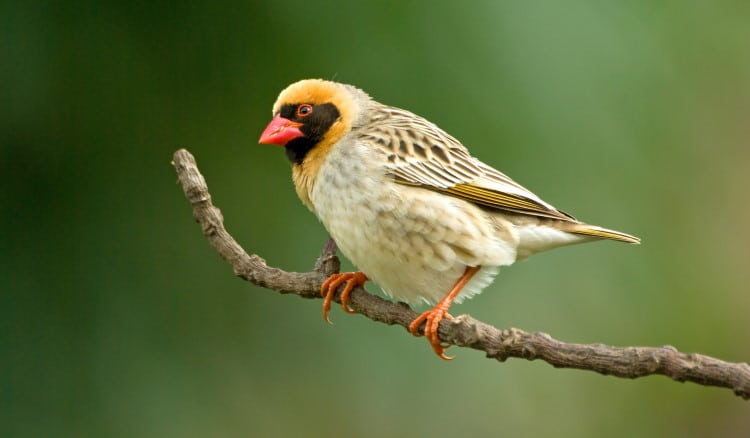The red billed quelea is the most common bird on earth

The Red-Billed Quelea: The Most Common Bird on Earth

Did you know that the red-billed quelea holds the title for being the most common bird on Earth? With a staggering estimated adult breeding population of 1.5 billion pairs, this small passerine bird truly dominates the avian world. Let’s dive deeper into the fascinating world of the red-billed quelea and explore why it deserves this prestigious recognition.
Native to sub-Saharan Africa, the red-billed quelea, scientifically known as Quelea quelea, is a highly adaptable bird species that thrives in vast numbers across various habitats, including grasslands, savannas, and agricultural areas. These small finch-like birds possess an exceptional ability to reproduce quickly and efficiently, contributing to their overwhelming population.

The red-billed quelea’s impressive population numbers have both positive and negative impacts on the environment and human populations. On one hand, this bird plays a vital ecological role by shaping ecosystems through its feeding behaviors. Queleas primarily feed on grass seeds, including those of economically important crops like millet and rice. In their search for food, queleas help aerate the soil and distribute seeds, contributing to plant growth and biodiversity.
On the other hand, the immense population size of the red-billed quelea can pose significant challenges, especially for subsistence farmers. These birds travel in massive flocks, consuming vast quantities of grains and causing substantial agricultural losses for farmers. Efforts to control their population or minimize damage have become a necessity in regions where they coexist with human settlements.
Despite its reputation as an agricultural pest, the red-billed quelea also has a cultural significance in certain African communities. Some tribes view these birds as a valuable food source during times of scarcity. Additionally, their beautiful vibrant plumage and synchronized flock movements make them a spectacle worth witnessing and admiring.
In recent years, conservationists and scientists have been closely monitoring the red-billed quelea population and studying its behavior. Understanding the quelea’s breeding patterns, movement, and habitat preferences aids in developing effective management strategies that balance ecological and agricultural concerns.
To conclude, the red-billed quelea undeniably holds the crown as the most common bird on Earth. Its extraordinary population size, adaptability, and ecological impact make it an intriguing subject of study. While its abundance brings ecological benefits, it also brings challenges, prompting a need for effective management practices. Understanding and appreciating the remarkable world of the red-billed quelea allows us to develop sustainable approaches for coexisting with this astonishing bird.
Related Posts
Quick Links
Legal Stuff

